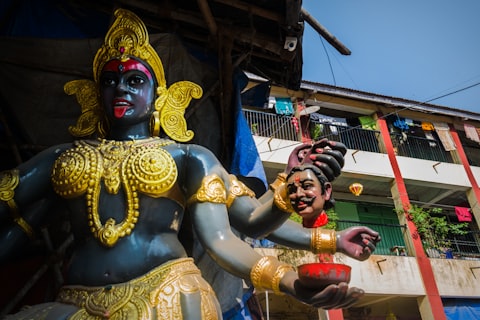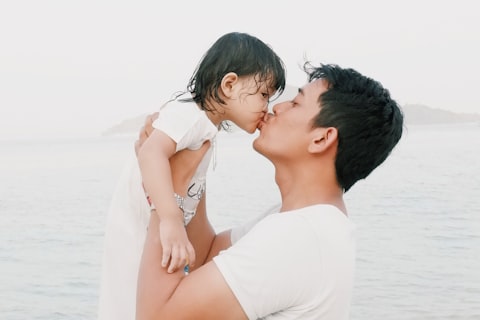Unraveling the Diversity of Human Languages: A Tapestry of Linguistic Variation and Cultural Expression
- الحصول على الرابط
- X
- بريد إلكتروني
- التطبيقات الأخرى
Unraveling the Diversity of Human Languages: A Tapestry of Linguistic Variation and Cultural Expression
Human languages, with their rich tapestry of sounds, structures, and
expressions, encapsulate the essence of cultural diversity and the
complexities of human communication. This article embarks on a
captivating exploration of the differences in human languages, delving
into the multifaceted dimensions of linguistic variation, cultural
significance, and the profound impact of language diversity on human
societies.
Linguistic Diversity and Variation
Human languages exhibit a remarkable array of phonetic, syntactic, and semantic variations, reflecting the diverse cultural and historical contexts in which they have evolved.
-
Phonetic Diversity: Varied sounds and phonetic inventories across languages, influencing speech patterns and articulation.
-
Syntactic Structures: Diverse grammatical arrangements and sentence constructions, shaping the organization of ideas and communication styles.
-
Semantic Nuances: Variances in word meanings, idiomatic expressions, and linguistic nuances, enriching the depth and subtlety of communication.
Cultural Significance and Identity
Languages serve as repositories of cultural heritage, identity, and collective memory, embodying the unique narratives and worldviews of diverse communities.
- Cultural Expressions: Language reflects cultural practices, traditions, and societal norms, preserving and transmitting cultural knowledge and values.
- Identity Formation: Linguistic diversity contributes to individual and collective identities, fostering a sense of belonging and cultural pride.
Historical Evolution and Language Families
The historical evolution of languages has given rise to distinct language families and genealogical relationships, illuminating the interconnectedness of linguistic lineages.
- Language Families: Groupings of languages with shared ancestry and common linguistic features, such as the Indo-European or Sino-Tibetan language families.
- Language Contact and Borrowing: Interactions between languages lead to lexical borrowings, linguistic influences, and the emergence of creole and pidgin languages.
Sociolinguistic Variation and Dialectal Diversity
Within linguistic communities, variations in speech patterns, vocabulary, and pronunciation give rise to dialectal diversity, reflecting regional, social, and cultural distinctions.
- Regional Dialects: Geographically influenced linguistic variations, encompassing regional accents, vocabulary differences, and grammatical peculiarities.
- Social Registers: Linguistic variations based on social contexts, formality, and situational communication, such as formal, informal, or colloquial speech.
Multilingualism and Language Contact
The coexistence of multiple languages within a community fosters language contact, bilingualism, and the dynamic interplay of linguistic influences and code-switching.
- Bilingual Proficiency: The ability to fluently communicate in two or more languages, reflecting cognitive adaptability and cultural versatility.
- Language Convergence: Interactions between languages lead to linguistic hybridity, language blending, and the emergence of mixed linguistic forms.
Global Significance and Language Preservation
The preservation of linguistic diversity is essential for safeguarding cultural heritage, promoting intercultural understanding, and preserving endangered languages.
- Cultural Heritage: Endangered language preservation efforts aim to document, revitalize, and sustain linguistic traditions and knowledge systems.
- Intercultural Communication: Language diversity enriches global communication, fostering cross-cultural understanding and appreciation.
Conclusion: Embracing Linguistic Plurality
The differences in human languages reflect the kaleidoscope of human expression, cultural heritage, and the intricate tapestry of linguistic diversity. Embracing and preserving language variations is essential for nurturing cultural richness, promoting intercultural dialogue, and celebrating the multifaceted expressions of human communication.
In conclusion, the differences in human languages reflect the kaleidoscope of human expression, cultural heritage, and the intricate tapestry of linguistic diversity. Embracing and preserving language variations is essential for nurturing cultural richness, promoting intercultural dialogue, and celebrating the multifaceted expressions of human communication.
Unraveling the Diversity of Human Languages: A Tapestry of Linguistic Variation and Cultural Expression
Keywords
Linguistic Diversity Cultural Significance Language Families Dialectal Diversity Multilingualism Language Preservation
Linguistic Diversity and Variation
Exploring the vast array of phonetic, syntactic, and semantic variations in human languages.
-
🌍 Phonetic Diversity: Different sounds and phonetic systems shape speech patterns.
-
📚 Syntactic Structures: Grammatical arrangements influence idea organization.
-
🗣️ Semantic Nuances: Word meanings and expressions add depth to communication.
Figures
Linguistic Variation:
Images


Cultural Significance and Identity
Languages as vessels of cultural heritage and identity markers.
- 🎭 Cultural Expressions: Language as a medium for cultural practices and values.
- 🆔 Identity Formation: Linguistic diversity shaping personal and group identities.
Figures
Cultural Impact of Language:
Images

Historical Evolution and Language Families
The genealogical ties and historical development of language families.
- 🌳 Language Families: Shared ancestry and features in language groups.
- 🤝 Language Contact and Borrowing: Lexical and linguistic exchanges between languages.
Figures
Language Family Tree:
Images

Sociolinguistic Variation and Dialectal Diversity
Speech patterns and vocabulary reflecting regional and social distinctions.
- 📍 Regional Dialects: Variations influenced by geography.
- 💬 Social Registers: Variations based on social context and formality.
Figures
Dialectal Diversity:
Images

Multilingualism and Language Contact
The dynamics of bilingualism and the interplay of languages within communities.
- 🗨️ Bilingual Proficiency: Fluency in multiple languages.
- 🔄 Language Convergence: Blending and hybridity in linguistic forms.
Figures
Multilingualism:
Images

Global Significance and Language Preservation
The importance of preserving linguistic diversity for cultural heritage and global understanding.
- 🌐 Cultural Heritage: Documenting and revitalizing endangered languages.
- 🤝 Intercultural Communication: Enriching global dialogue through language diversity.
Figures
Language Preservation:
Images

Conclusion: Embracing Linguistic Plurality
Celebrating the rich expressions of human communication through linguistic diversity.
Embracing and preserving language variations is crucial for nurturing cultural richness and promoting intercultural dialogue.
Keywords
Linguistic Plurality Cultural Richness Intercultural Dialogue Human Communication
- الحصول على الرابط
- X
- بريد إلكتروني
- التطبيقات الأخرى










تعليقات
إرسال تعليق